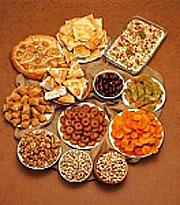 An Eating Disorders Therapist shares tips from her latest book on practicing Mindful Eating
An Eating Disorders Therapist shares tips from her latest book on practicing Mindful Eating
As promised, I am delivering part two of the roadblocks to mindful eating in this second article which is adapted from my latest book and audio program, “It’s Not About the Food: A Woman’s Guide to Making Peace With Food and Our Bodies” (www.endyoureatingdisorder.com). I hope you enjoy it.
Roadblock #2: EATING WITHOUT ENJOYMENT
This is a topic that is dear to my heart. You see, my mother, Marion Kane, is a food writer. In fact, she was the Food Editor of two major Canadian newspapers for a total of 17 years. So while most kids spent their evenings playing outside, I was busy dining in the finest restaurants of Toronto ordering lots of dishes to help my mum in her “tasting” ceremony which would either make said restaurant the latest “hot spot” or else put it out of business within two weeks.
My mother, unlike me, doesn’t appear to struggle with what to eat, how much to eat, or knowing when she’s full. But still, I have managed to learn some important things from her when it comes to eating joyfully. In my mother’s house, eating is a celebration: a time set aside to painstakingly prepare and enjoy a good meal.
In my mother’s words:
“We all have to eat. Most people prepare some of their own meals. Many of us are passionate about food and cooking. All of which explains why I love being a food writer: It so easily connects me with individuals of every age, color, social status, shape and size. I’ve written about where and what Toronto taxi drivers like to eat — a story that led me to burger joints, an African take-out, South Asian eateries and a Jewish deli. I once checked our city’s cops’ top spots to nosh and, for another article, visited favorite haunts of local truckers. In a different vein, I talked to chefs who man high-end kitchens atop downtown skyscrapers for CEOs, and penned a feature about those who prepare the fare at local spas and health clubs. Food is the great equalizer and, from my experience, there’s no better way to lift one’s spirits or create a bond than sharing it with others.”
My mother’s dearly departed friend, Julia Child, agrees:
“Dining with one’s friends and beloved family is certainly one of life’s primal and most innocent delights, one that is both soul-satisfying and eternal.”
A recent survey showed that Americans are eating more but enjoying it less. Just 39% of adults in this survey say they enjoy eating “a great deal,” down from the 48% who said the same in a survey in 1989.
Also, the survey found that the decline in enjoyment of eating has been greater among those who consider themselves “overweight” than among those who consider themselves “just about the right weight.”
In other words, when you’re not happy with your body, you’re not enjoying one of life’s greatest pleasures — eating.
For homework, I’d like to you to write answers to each of the following questions on a piece of paper or in your journal:
- Describe an ideal eating experience. Describe in detail the atmosphere, table setting, location, type of food you’d be enjoying, and whether you would be alone or with others.
- Think about how you eat your meals now. Now write down some things that you can do to make your day-to-day eating experiences more enjoyable.
Next week part 3 of 3 …
Esther Kane, MSW, Registered Clinical Counsellor, is the author of the book and audio program, “It’s Not About the Food: A Woman’s Guide To Making Peace with Food and Our Bodies” (www.endyoureatingdisorder.com) and “Dump That Chump” (www.dumpthatchump.com), and “What Your Mama Can’t or Won’t Teach You” (www.guidebooktowomanhood.com). Sign up for her free monthly e-zine, Women’s Community Counsellor, to uplift and inspire women at: (http://www.estherkane.com)
